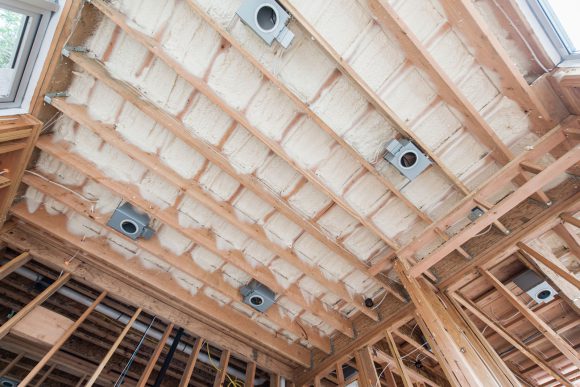
[Images by BUILD LLC]
The insulation install has started on the Case Study House 2016 and the different materials and methods are worth reviewing. While the majority of the structure (walls and ceilings) receives fiberglass batt insulation, there are two key areas in the residence that use spray foam insulation. Both of the areas receiving spray foam insulation have one key factor in common: each sits between conditioned interior area and an exterior deck surface. The cedar corner is cut out to create a covered front entry, which contains conditioned area below the open porch. In a similar fashion, the deck at the upper floor sits above a conditioned bedroom.
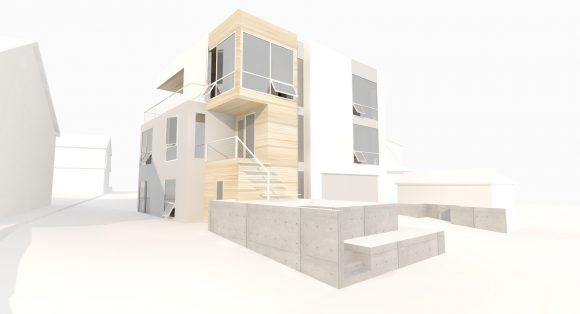
This adjacency between deck area above and conditioned area below creates a challenging situation for a couple of reasons. Because this portion of the house separates exterior from conditioned interior space below, the conventional use of batt insulation would require air flow (or venting) above the batt insulation. Adding venting at a situation like this typically means overhanging the deck structure and providing concealed soffit venting at the underside of the overhang or puncturing the siding with small louvers to achieve the required air flow. Neither approach is particularly desirable on a sleek, modern house. Also, the ceiling/roof/deck assembly can get rather tall, and because of this, we’ll often use shallow joists at the deck to decrease the overall height. With less height at the joists and more structure above for the sloped structure at the deck, the cavity for the required R-49 insulation is limited. Spray foam insulation solves both of these issues.
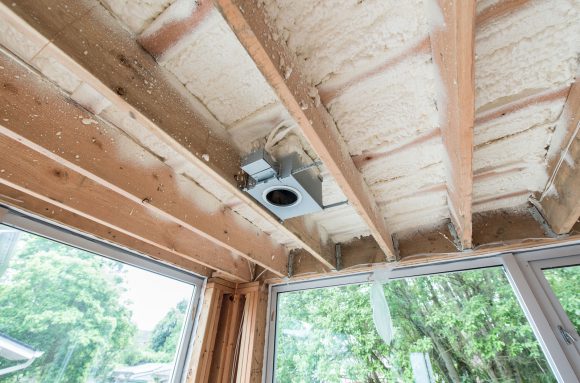
Because the R-value of spray foam insulation is much higher than conventional batts (R6.5 vs. R3.5) the required R-49 insulation value can be obtained in less depth. When applied 2” thick or greater, closed-cell, spray foam also air seals the insulation cavity, eliminating the need for any venting. Spray foam allows a compact overall assembly while typically exceeding the energy code.
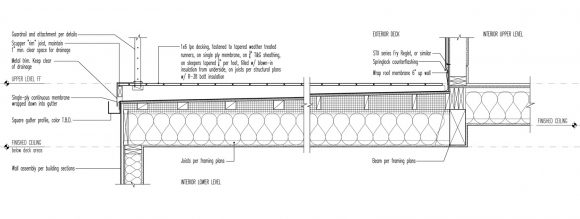
While this particular application might make a case for substituting spray foam insulation for batt insulation throughout the entire house, there are some considerations. Spray foam is more expensive than batt insulation, and because of the quantity of insulation used in a home, the extra cost can add up quickly. Also, while spray foam may seal the insulation cavity, we still have concerns about trapped moisture in the damp Pacific Northwest. No matter how well you dry out the cavity, or keep water from entering, the water here in the Pacific Northwest is working 24-7. Even after a low moisture content is achieved in the framing, if water finds its way into the cavity, there is little opportunity for escape. For these reasons we tend to be judicious with the use of spray foam insulation.
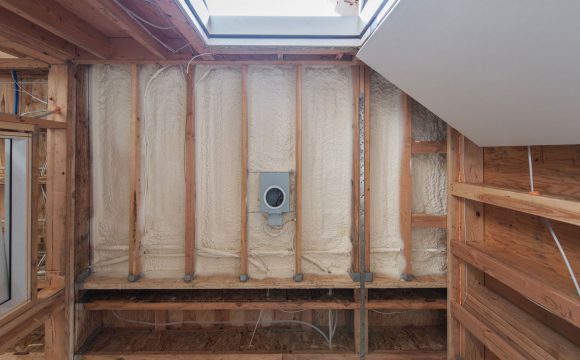
Both deck situations explained above use a combination of several inches of spray foam insulation to seal the cavity and bump up the R-value. A layer of conventional batt insulation is then added below the spray foam insulation. In combination, this insulation sandwich easily meets the R-49 requirement, all while keeping the envelope clean and unencumbered from soffits or vents. When desired, high density batt insulation can be used for even greater R-values.
Stay tuned for more progress on the Case Study House 2016.
Cheers from Team BUILD





